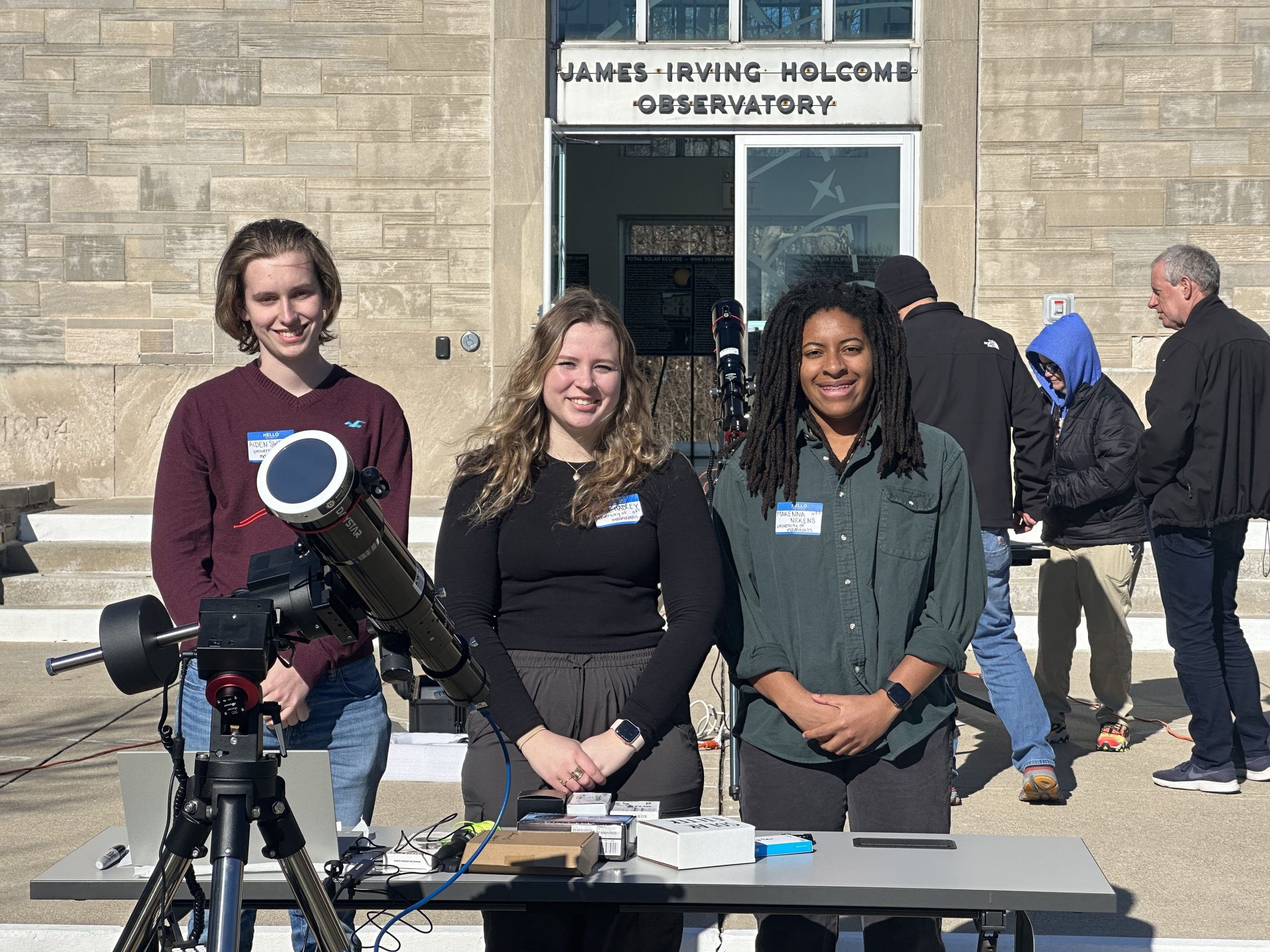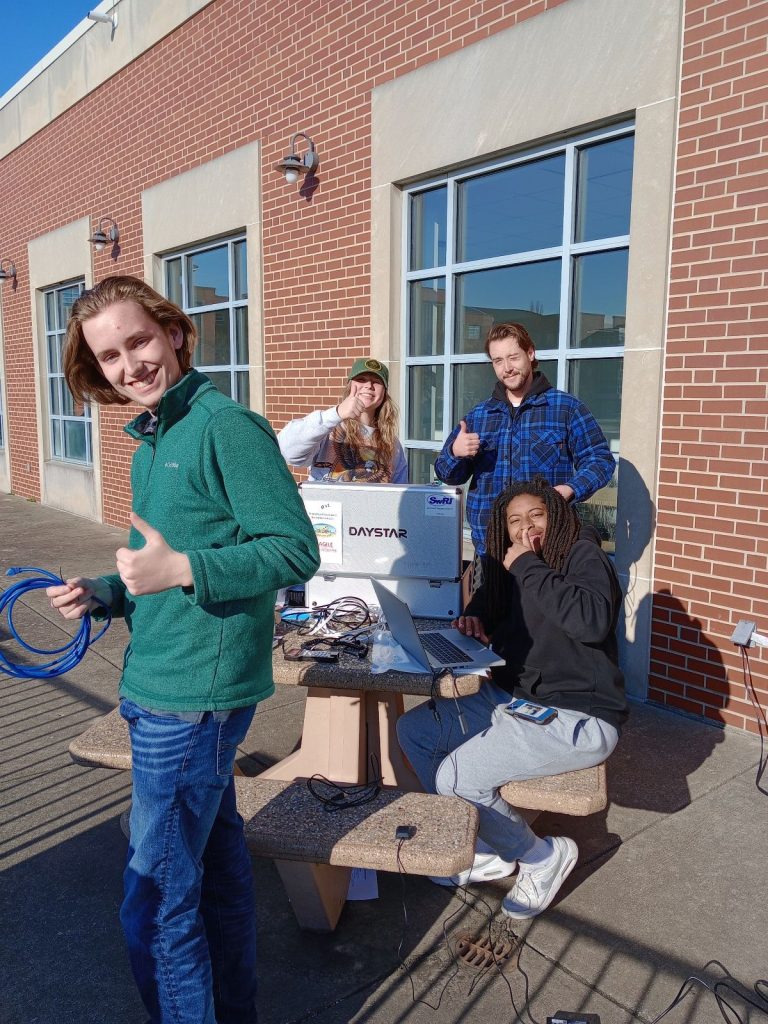UIndy Students to Capture Solar Eclipse in NASA’s Citizen CATE 2024 Project

Written by Troi Watts
A team of UIndy students will capture video and photographic footage of the total solar eclipse as part of the Citizen Continental-America Telescope Eclipse (Citizen CATE) 2024 project, organized by the National Aeronautics and Space Administration (NASA).
The Citizen CATE project is a network of volunteer teams equipped and trained to capture videos of the Sun’s corona during the total solar eclipse. Each team will collect two to three minute clips, which will be combined into a 60-minute movie that will also reveal the motion of density features in the middle corona, thereby allowing scientists to measure the strength of the solar wind. The teams will also do scientific outreach in their communities, visiting local libraries, K-12 schools, and museums to help teach the public about solar eclipses and the science behind them. This project is crucial to helping scientists understand solar flares, and is especially time-sensitive, as the next total solar eclipse will not take place in the U.S. for another 129 years.
UIndy’s team is comprised of four students from the Department of Physics and Earth-Space Sciences: Annie Hadley, Makenna Nickens, Aiden Sweets, and Joshua Gamble.
Hadley, a junior environmental science and Earth-space science double major and the team’s leader, discovered the project after speaking with Dr. Sarah Reynolds, assistant professor of physics and earth-space science. After learning more, Hadley knew this was too great of an opportunity to pass up.
“I have had a huge passion for the space sector my whole life. That’s why I’ve been doing what I’ve been doing,” said Hadley. “Eventually, I would love to work with NASA. So this is my first NASA-funded project.”
In addition to being a great experiential-learning opportunity, the Citizen CATE project also offers Hadley and her team the opportunity to be published on NASA’s solar eclipse research, marking the first time each of the UIndy students have been published in a national-level research project.

Upon earning a place in the Citizen CATE project, Hadley’s team also secured specialized research equipment, including high-polarization technology, for the University. NASA provided the team with the tools necessary to capture their footage on April 8, as well as professional training on how to operate the equipment – all free of charge. Once the project is complete, the University will keep the equipment to assist in future Earth-space instruction and research.
“As team leader, I’m the main point of communication with the leaders of Citizen CATE,” explained Hadley. “We actually just met with a local group from Butler University for an initial training. I also communicate with the teams from the Southwest Research Institute and NASA daily to let them know what’s happening with our data, how our practice sessions are going, and that we’re ready for April 8.”
On April 8, Hadley and her team will travel to Wapakoneta, Ohio (coincidentally, the hometown of the first person to set foot on the moon, U.S. astronaut Neil Armstrong) to capture their portion for the Citizen CATE project.
“I’ve already learned so much, especially working with the specialized equipment,” said Hadley. “But more than anything, I’m really excited to see the outcomes of the actual research, and what we learn from solar science. This is like the first big project that will actually study this topic, so there’s so many things that I think are going to come out of it. And we get to be a part of it.”
“I’d like to give a huge shout-out to my team,” continued Hadley. “They’ve been working so hard on this as well. I couldn’t do this without them.”
NASA will release the finalized footage from the Citizen CATE 2024 project later this year. In the meantime, the UIndy community can learn more about the UIndy team’s research at the Scholar Showcase, where Hadley and her team will present their findings and footage, on Wednesday, April 17, 2024.
